In the wild heart of British Columbia, where the mountains loom like ancient guardians, and the waters shimmer with the promise of adventure, lies the Skeena River—a living testament to the untamed beauty of nature. I drive here from my home in British Columbia every August in the hopes of hitting the right run of Coho, Sockeye and Steelhead run combined with the right weather, combined with the right river clarity. It is a 12 hour drive through some majestic parts of the province I call home.
BY DAVID P. RADCLIFFE
The day after we arrived, and an early anticipation filled morning, we launched my little jet boat, and after a short run in some shallow water, we approached a promising stretch of the river. Not knowing if we had arrived before, during or after the Sockeye run, I began explaining the intricacies of the day’s strategy to my friend and fishing partner, who is relatively new to idiosyncrasies or Salmon fishing in a river.
Today, we would begin with targeting Sockeye salmon, the Queens of the river. Their legendary strength compared to size are of fishing lore, and I could hardly contain my excitement during the tutelage.
With my seven-weight switch rod in hand and a brightly colored streamer pattern tied on, I made my first cast. The fly sunk quickly into the head of the run and began the ten-meter drift to the tail. The sun had climbed up to the top of a snowy peak opposite and beyond the far shore, a warm west wind began to blow and the river was running clear. It was moments like these that made all the preparation and travel worth it.
Only 15 minutes passed and as I got into a tranquil rhythm of casts and re-casts, punctuated by the occasional swish of a passing fish right at my feet, in knee deep water, I got my first strike. Just as I was beginning to lose myself in the rhythm of casting, the water just before the end of the run erupted with a violent splash. My rod bent under the power and weight of a salmon, and I was suddenly in a long-awaited battle. The fish leapt out of the water, a silver flash against the backdrop of the river indicating it was a Coho. Adrenaline surged through me as I tightened my drag ever so slightly. The fight was intense, as always with Coho—powerful runs and sudden, unexpected headshakes. A nice 6 kg. Coho….which I proceeded to lose at the net. Barbless hooks are required in British Columbia.
My next fish, only minutes later, was obviously a small Steelhead, a sea run Rainbow Trout. Finally, with a final burst of energy, the trout began to tire. Steelhead a more aggressive than even the mighty salmon and take blistering runs, and are often very aerial in their attempt to shake the fly….which it did….right at the net.
It was a Steelhead of about 6 kilos and fresh from the salt 100 km. to the west of where we were fishing. During our six-day trip, I managed to land one Steelhead and a few Coho and perhaps a dozen Sockeye. It was obvious we were just at the end of the Sockeye run and just at the beginning of the Coho run.
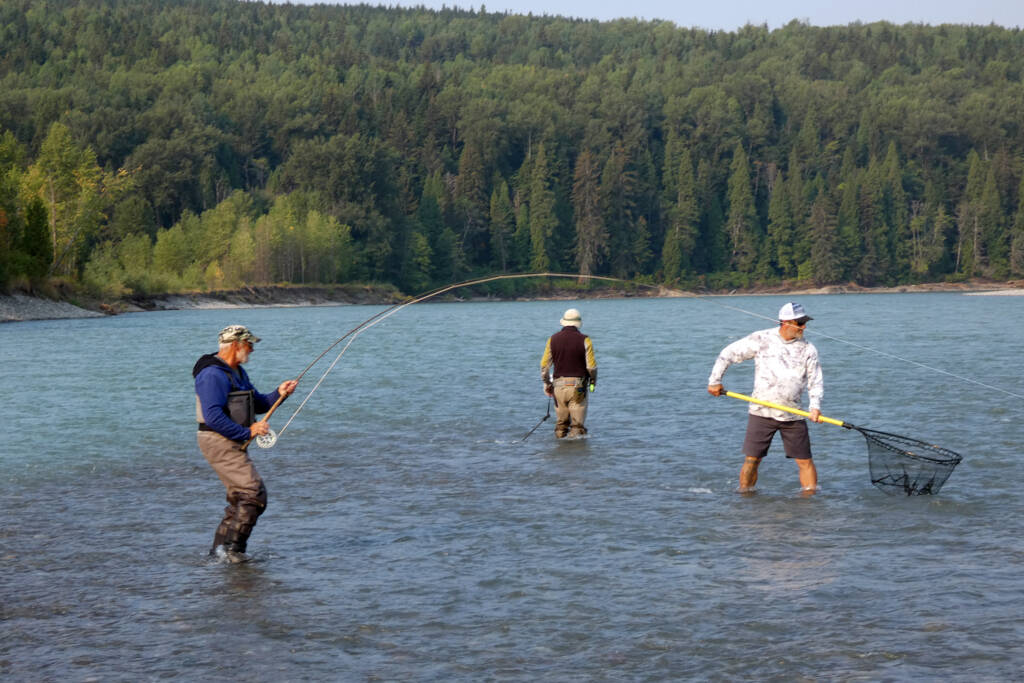

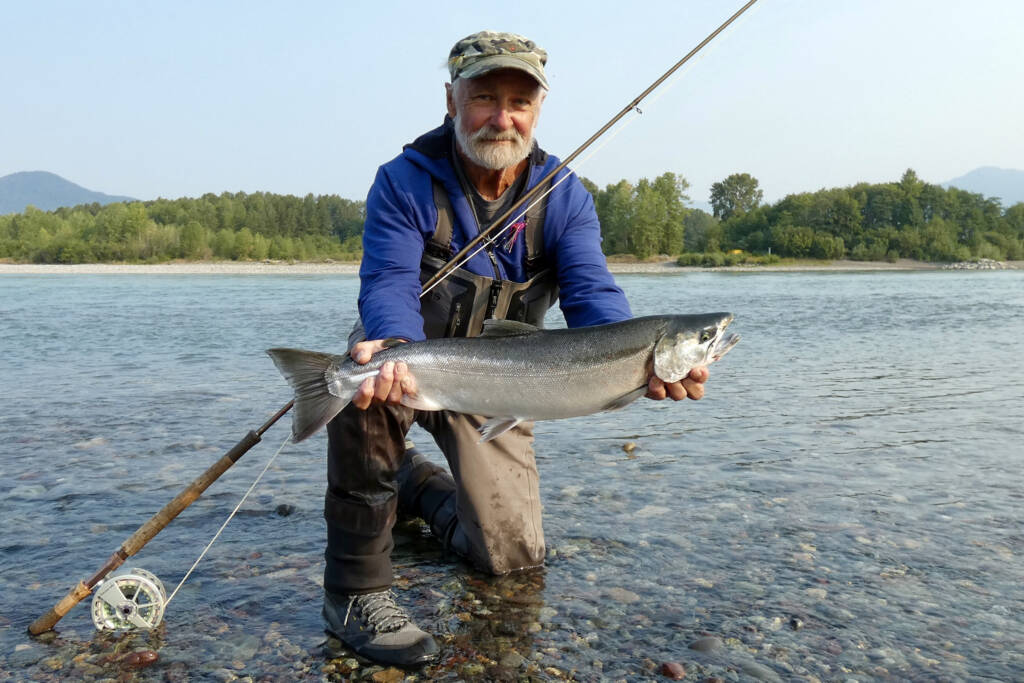
When I finally netted a fish, a nice Sockeye, it was a moment of pure exhilaration. This fish was landed after about an hour’s casting and the days tally would be north of 20 for us both. Coho, Sockeye and Steelhead all in one day, a testament to the health and vitality of the Skeena’s salmon run. I couldn’t help but marvel at the beauty of the fish, the river, the surroundings, and of the wild strength of the Skeena River.
As the day ended around 2pm, we boated back to the launch, and back to our camp site to reflect on the days events. The Skeena River had been both a partner and a challenge, offering a fishing experience that was as demanding as it was rewarding.
In the quiet of the evening in the provincial camp ground, enjoying a local beer, surrounded by the natural splendor of British Columbia, I felt a deep sense of gratitude. The Skeena River had not only delivered an unforgettable days fishing experience but had also, as it does each year around this time, connected me to a profound appreciation for the wild, untamed essence of nature. The long drive made much more sense now than it did at the start of the day.
My time on the Skeena River remains etched in my memory as one of the most exhilarating and profound fishing experiences of my life, even as I write this while on a trip for Dorado and Rooster Fish. It was a reminder of why we venture into the wild: to challenge ourselves, to connect with nature, and to discover moments of pure, unfiltered joy. The Skeena, with its roaring waters and majestic salmon, had given me a story that would be shared and cherished, hopefully for years to come.
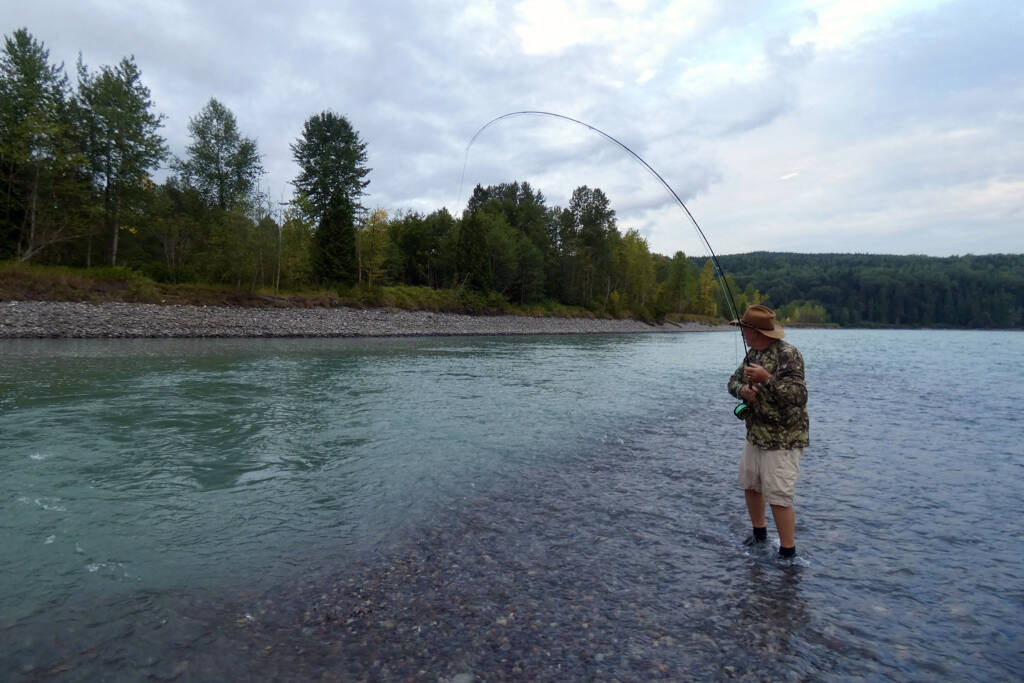
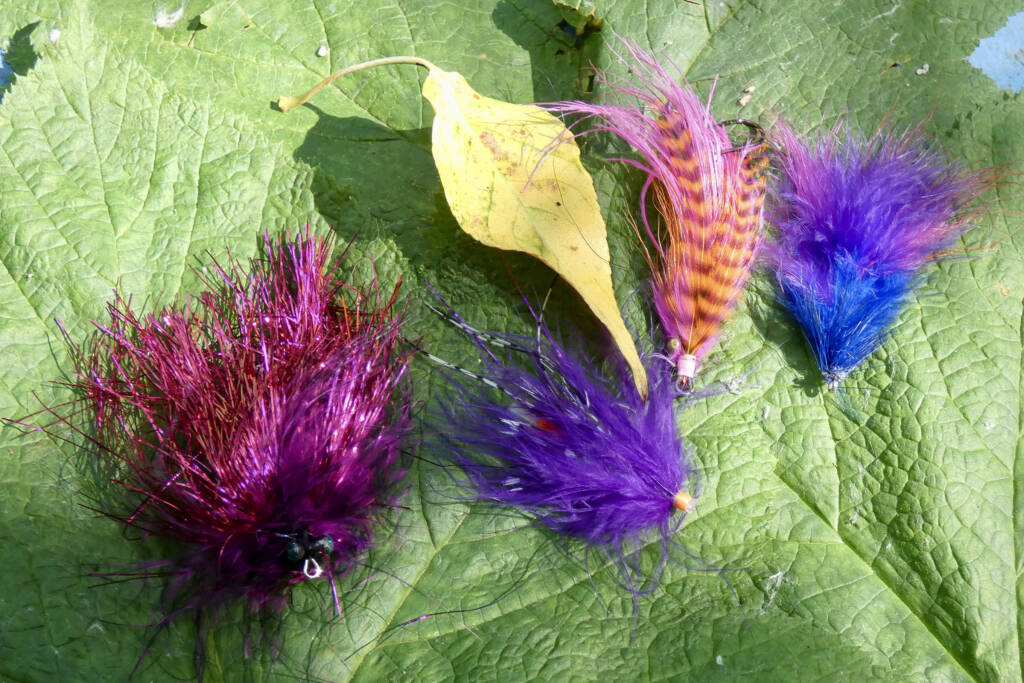
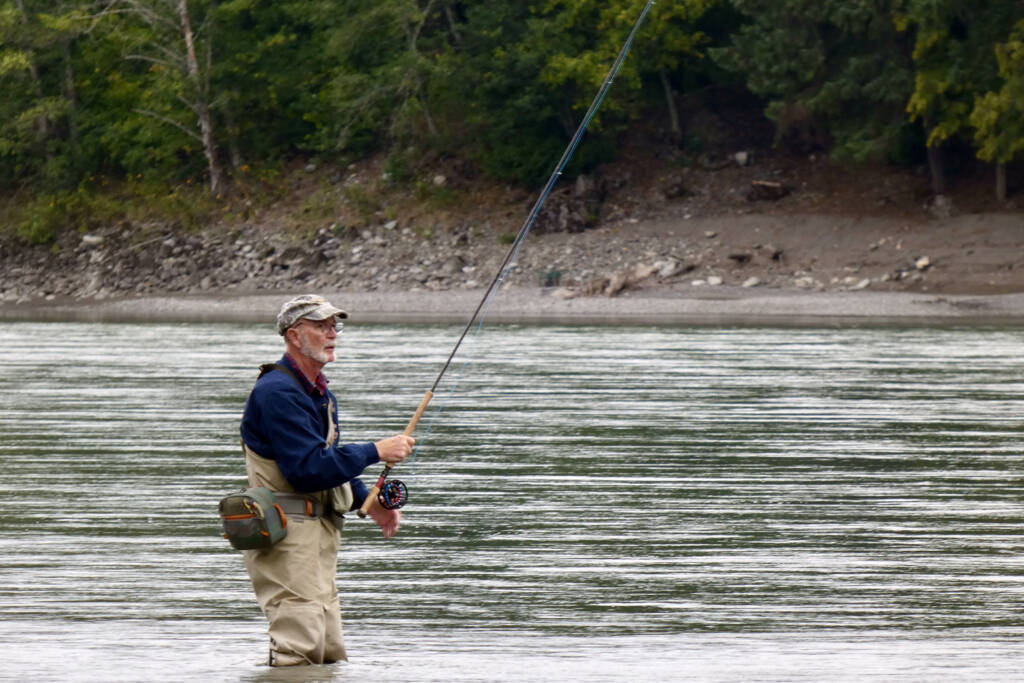
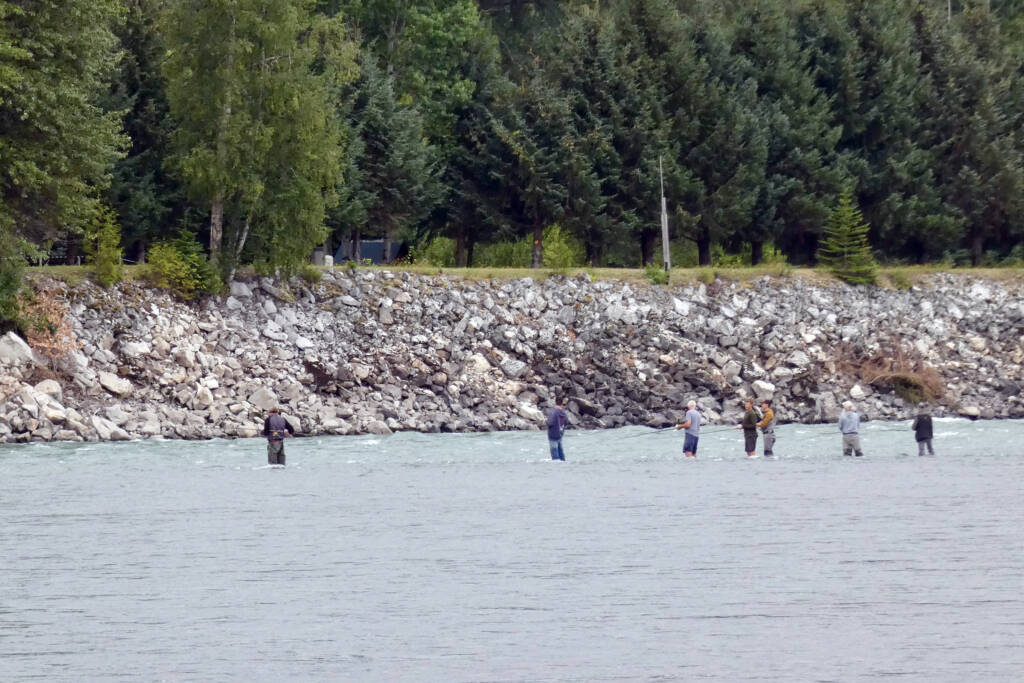
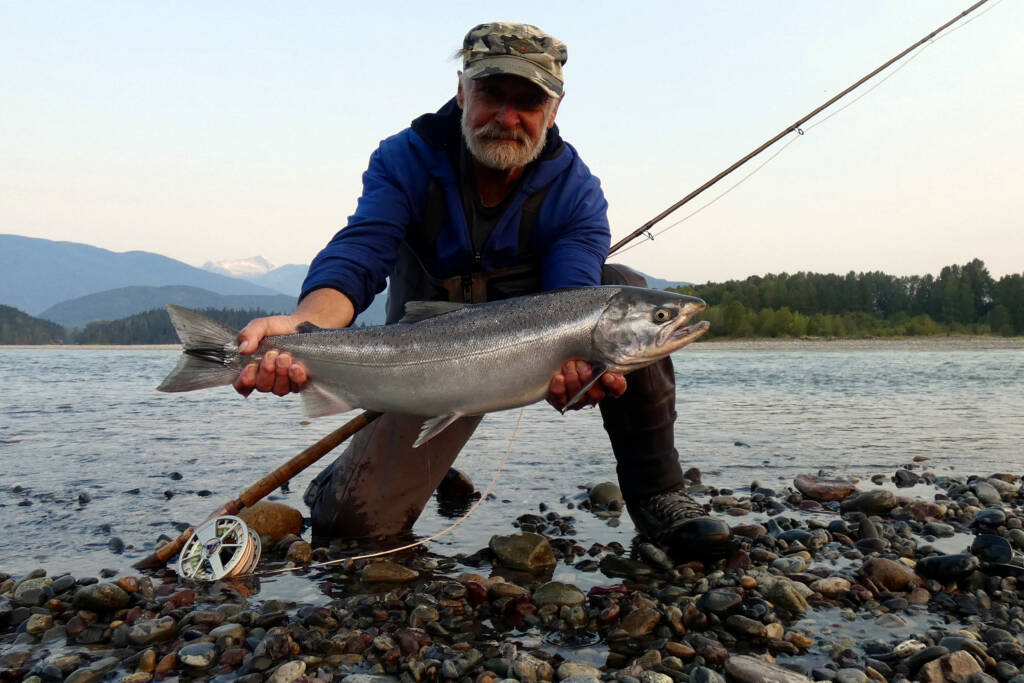
To make the most of your fly-fishing trip, timing is crucial. The Skeena River’s salmon runs are staggered throughout the year, with each species peaking at different times:
- Chinook (King) Salmon: The king of the river, chinook salmon, begin their migration in late June and peak from mid-May to early July. Their size and strength provide an exhilarating challenge for fly fishers.
- Coho Salmon: Known for their aggressive strikes and acrobatic fights, coho salmon make their appearance in mid-August, with the peak season running through September.
- Sockeye Salmon: These abundant fish start their journey in late July, with peak runs in August. While sockeye are less aggressive, they are a vital part of the river’s ecosystem.
- Pink Salmon: Running in odd-numbered years, pink salmon are present from July to early September. Their smaller size doesn’t diminish the thrill they offer.
- Steelhead: Runs occur often four times a year, so check with the local fly shops in Terrace, British Columbia.
When it comes to gear, a 7 to 9-weight single or double handed rod with a strong reel is essential, as salmon are powerful fighters. Floating lines are commonly used, but having a selection of sink-tips and sinking lines are a must for reaching different depths. Buy bulk sink tip to save money and make your own lengths. 3-5 meters are most common.
Salmon migrate in fast shallow water whenever possible, casting across the river is never necessary but your fly must by right on the bottom of the run. Snags are common place but a drift that is not just above bottom will not produce a bite.
Selecting the right fly can make all the difference. Here are some popular patterns:
- Chinook: Large, flashy streamers such as intruders or articulated patterns in bright colors like pink, orange, and chartreuse.
- Coho: Smaller streamers and spey patterns in subdued colors such as silver, blue, and green.
- Sockeye: Smaller, more subdued patterns like egg imitations or small streamers in natural colors.
- Pink: Bright, flashy patterns in pink, purple, and white to match their migratory habits.
- Steelhead: Same as all above.
The Skeena River’s vastness means that both guided and self-guided opportunities are available. A guided trip can provide local knowledge and access to prime fishing spots, while self-guided anglers can enjoy the freedom to explore the river’s many nooks and crannies. Casting techniques vary depending on the time of year and the specific stretch of the river you’re fishing. Swinging flies through fast water, dead drifting in calmer sections, and using a two-handed spey/switch rods can all be effective methods.The Skeena River is not just a fishing destination but a critical habitat for salmon. Practicing catch-and-release and respecting local regulations ensures that this incredible resource remains healthy and sustainable for future generations.
